Seville didn’t get off to a good start, I slept terribly the last night in Faro with a migraine which abated slightly on the bus trip to Seville and subsequently came back with vengeance that evening and through the next day – so bad that when I got to the hotel I went straight to bed and stayed there the following day only to rise the next morning. First one and a half days in Seville are a painkiller filled induced haze of the hotel room. On reflection, I think dehydration played a big part, stupid mistake.
Accommodation
One and a half days later my Seville experience began, rather jaded but nevertheless. The hotel, Casual Sevilla de las Letras is situated in the historical part of the city. It was the cheapest I had paid for accommodation to date, €41 per night with on-suite and including breakfast so unsurprisingly I was a little suspect when I booked, I was wrong; perfect for what I needed, clean, very strong wifi and great speed too, big roof top terrace etc. for what I’ve been looking for this ticks all the boxes and more – didn’t even need to use my own soap and towels so compared to other hostels, and this was cheaper, this is a perfect place, location and great staff.
It really didn’t take long, considering my state that’s saying a lot, to feel comfortable here and get a sense that I’d enjoy Seville. If Portugal was the aristocrat longing for previous glories but now financially struggling then Seville (speaking for the whole of Spain…..for now) gives me the feeling of the “cool aristocrat”; not quite as wealthy and powerful as they used to be but have adapted to the new world much better and beginning to thrive, the youth here seem to be a driving force for the future.
Seville Cathedral / Cathedral of Saint Mary of the See / Catedral de Santa María de la Sede

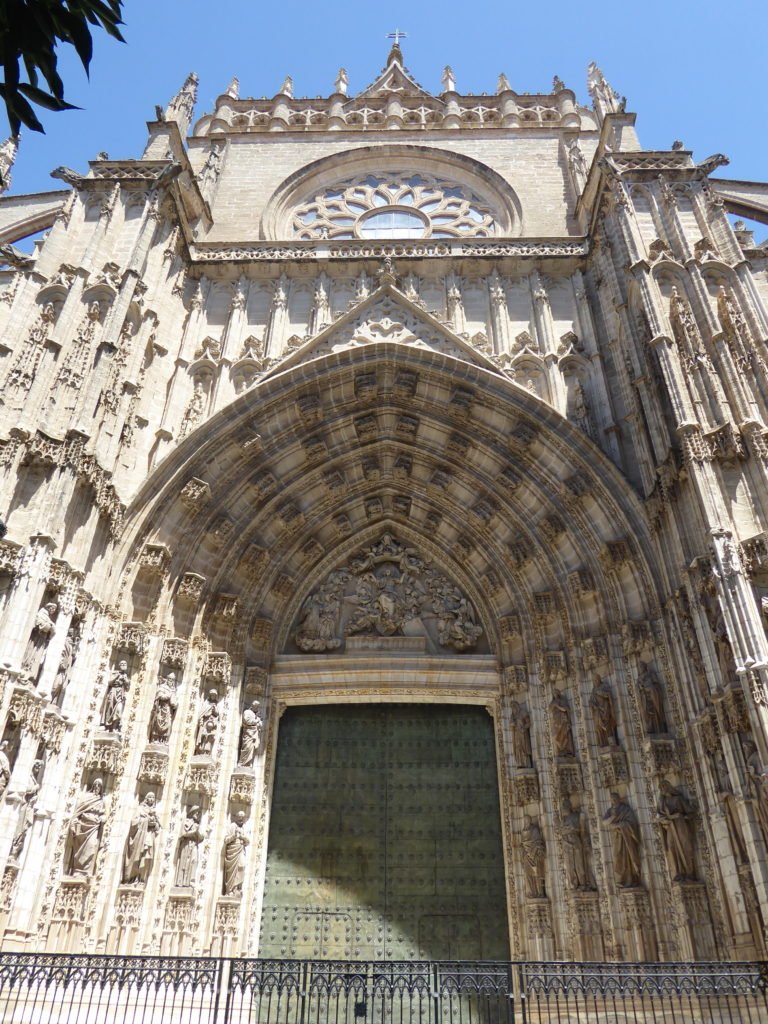
The roads are an intertwined mix of main arteries even though not very wide, little side one’s and alleyways so your scenery is always changing and as none of the buildings are really tall, four to five stories at most there is a sense of openness to the city leaving the sun to roast you throughout the day, average temperature was over 30 degrees every day with relatively cool evenings (my hotel had marble floors which was a godsend to cool my feet after a long day’s site seeing. Alas I digress again, first stop was Seville Cathedral (Cathedral of Saint Mary of the See and in Spanish: Catedral de Santa María de la Sede) and La Giralda/The Giralda (the bell tower of the cathedral). It is an immense complex, deceivingly so from the outside and gives a WOW factor when you walk in.

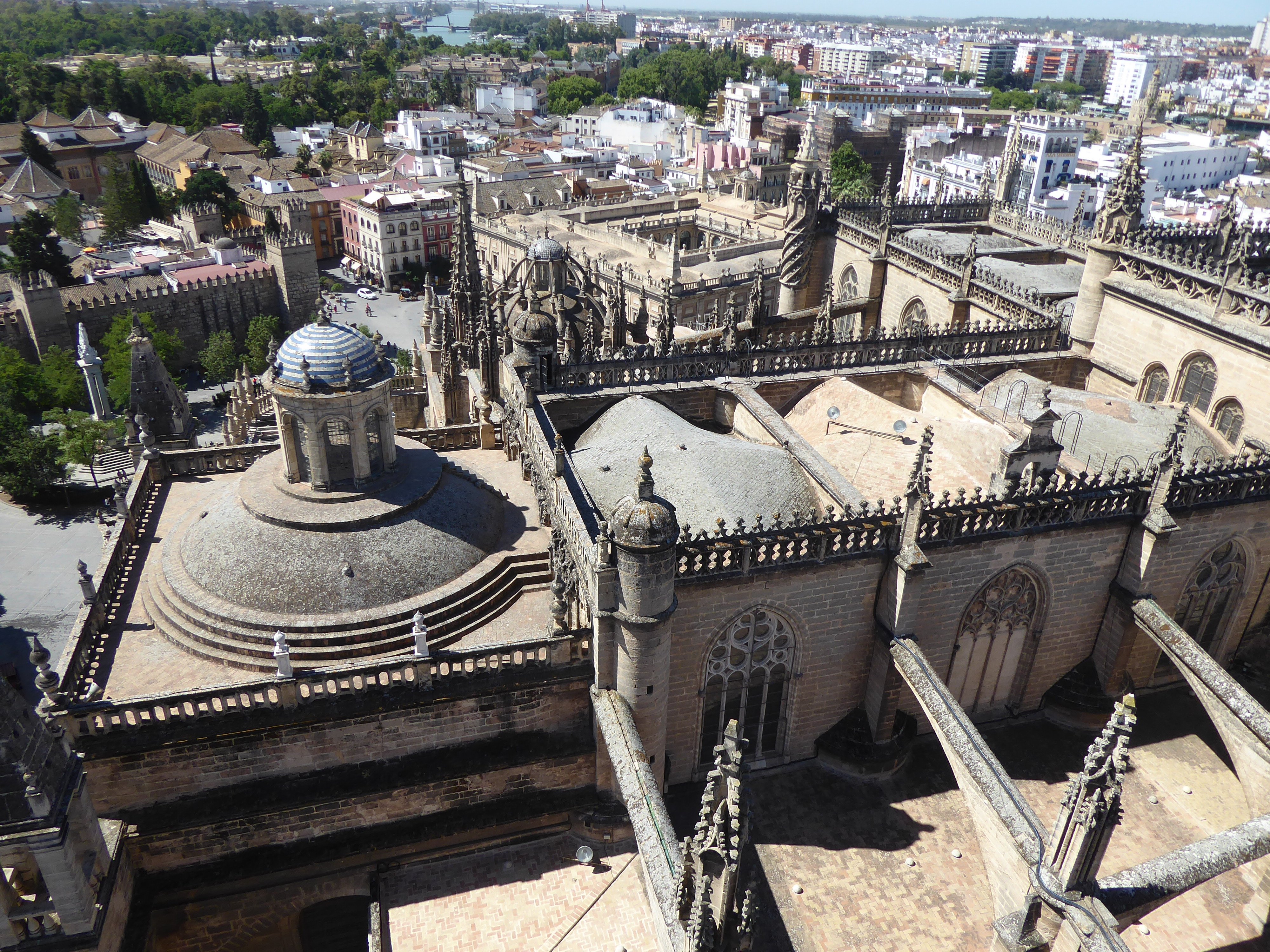
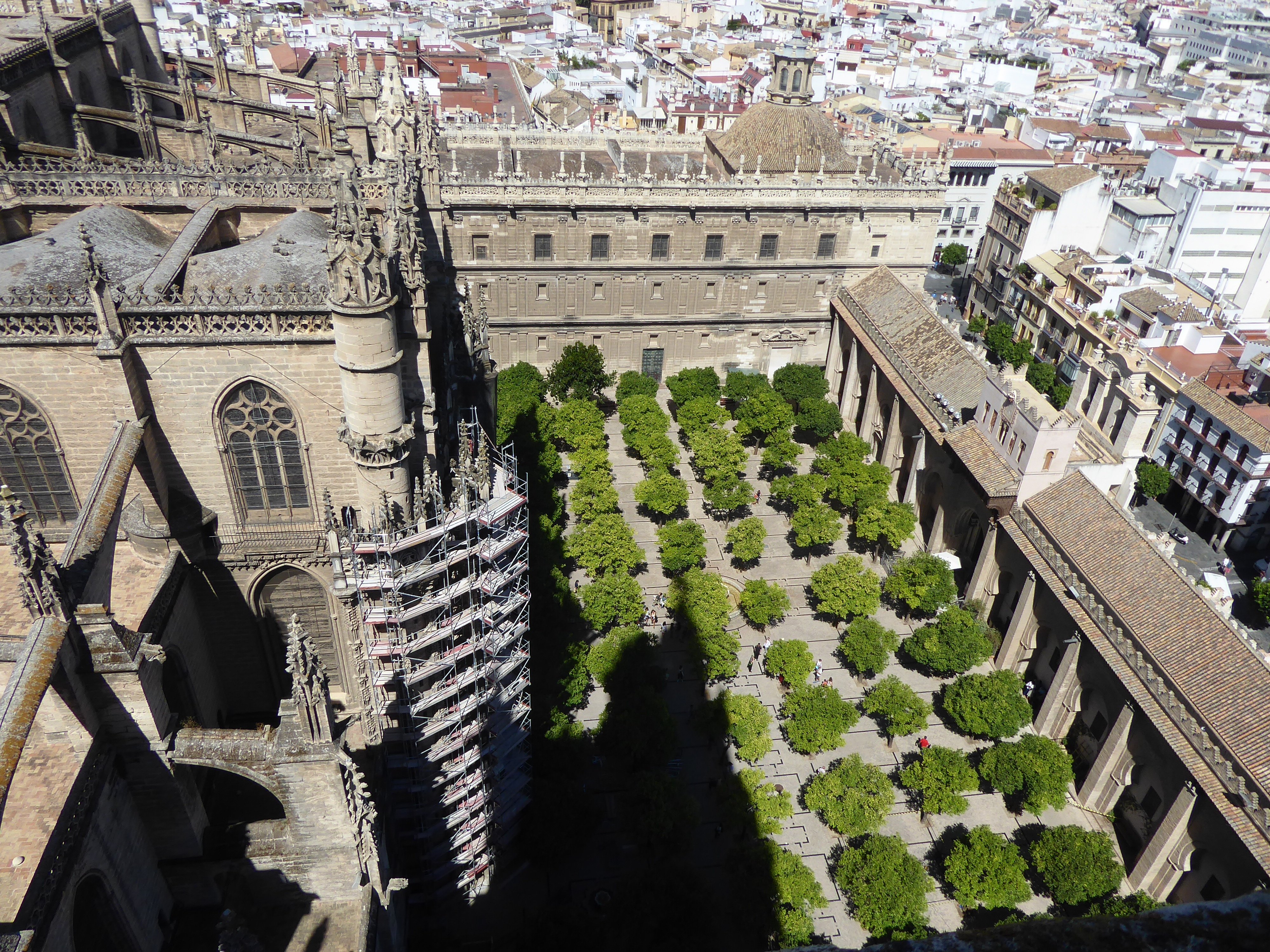
After it’s completion in the late 16th century it was the biggest cathedral in the world, now the third largest church in the world but still holds first position as the largest Gothic church. With intricately decorated ceilings high in the towering vaulted roofs and buttresses bulging out of the main building like ribs gripping the mammoth walls firmly into the ground, it is no doubt and impressive structure. There is so much to see that you could return numerous times and still not see everything. With such spans of space inside it is no wonder that the decorations are on a colossal scale, one would think that this would result in lack of detail, on the contrary, there is detail upon detail only multiplied by many in so much as scale and size.
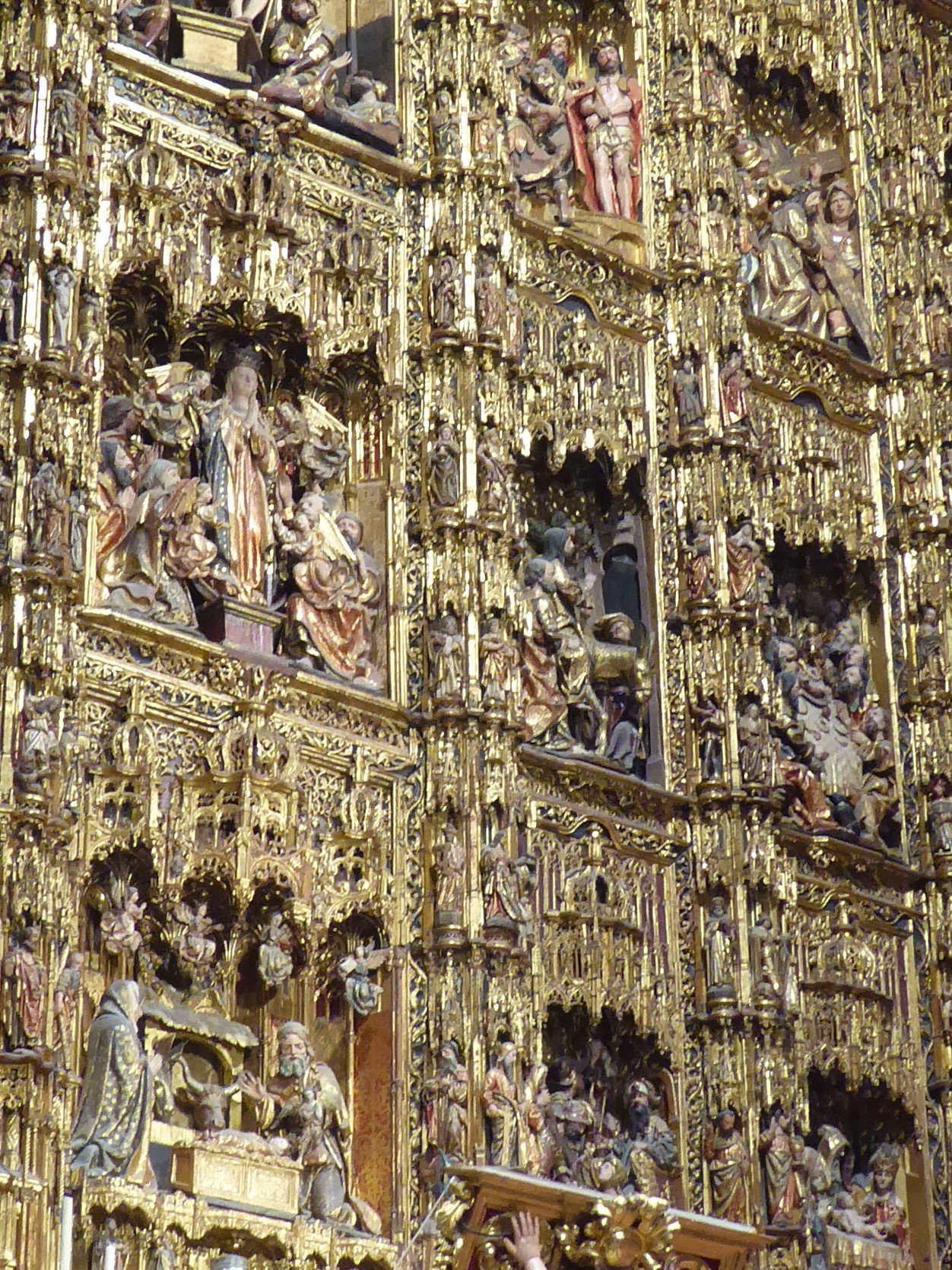
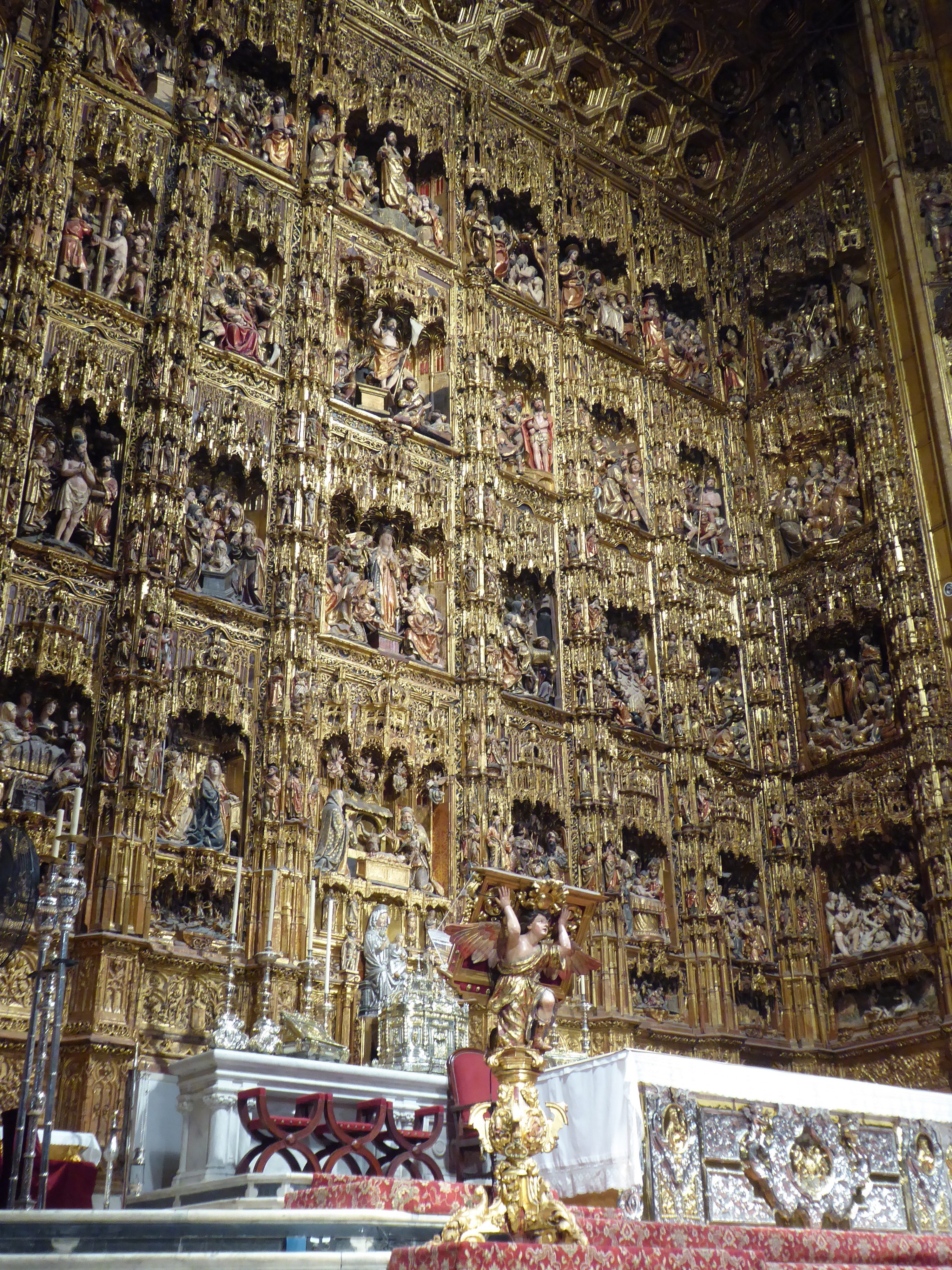

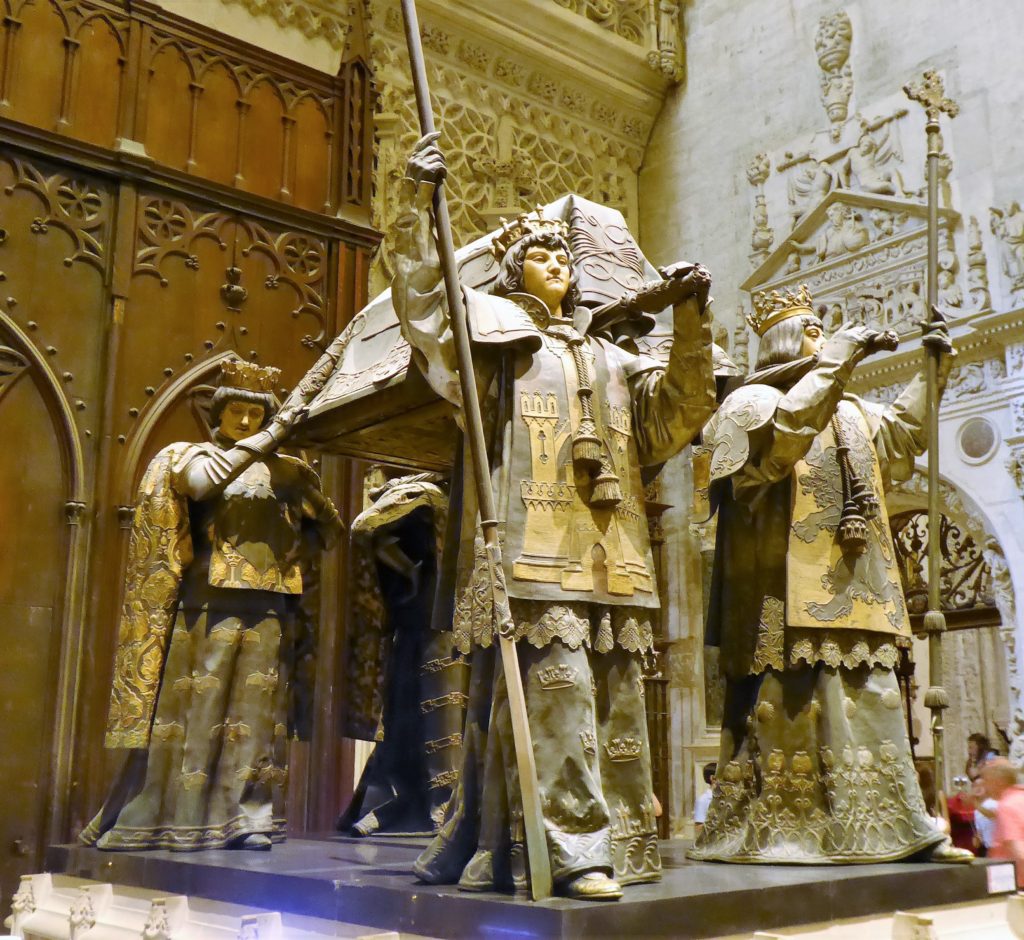
Christopher Columbus along with some royals (Ferdinand III of Castile – and others) and cardinals are also buried within the cathedral, Columbus was originally buried in Valladolid Spain, where he died in 1506, was moved around quite a bit afterwards including Dominican Republic and Cuba ending up in Seville in around 1899 – currently disputed by the Dominican Republic as they have a tomb in the Lighthouse Santo Domingo pertaining to hold the remains of none other than the man himself.
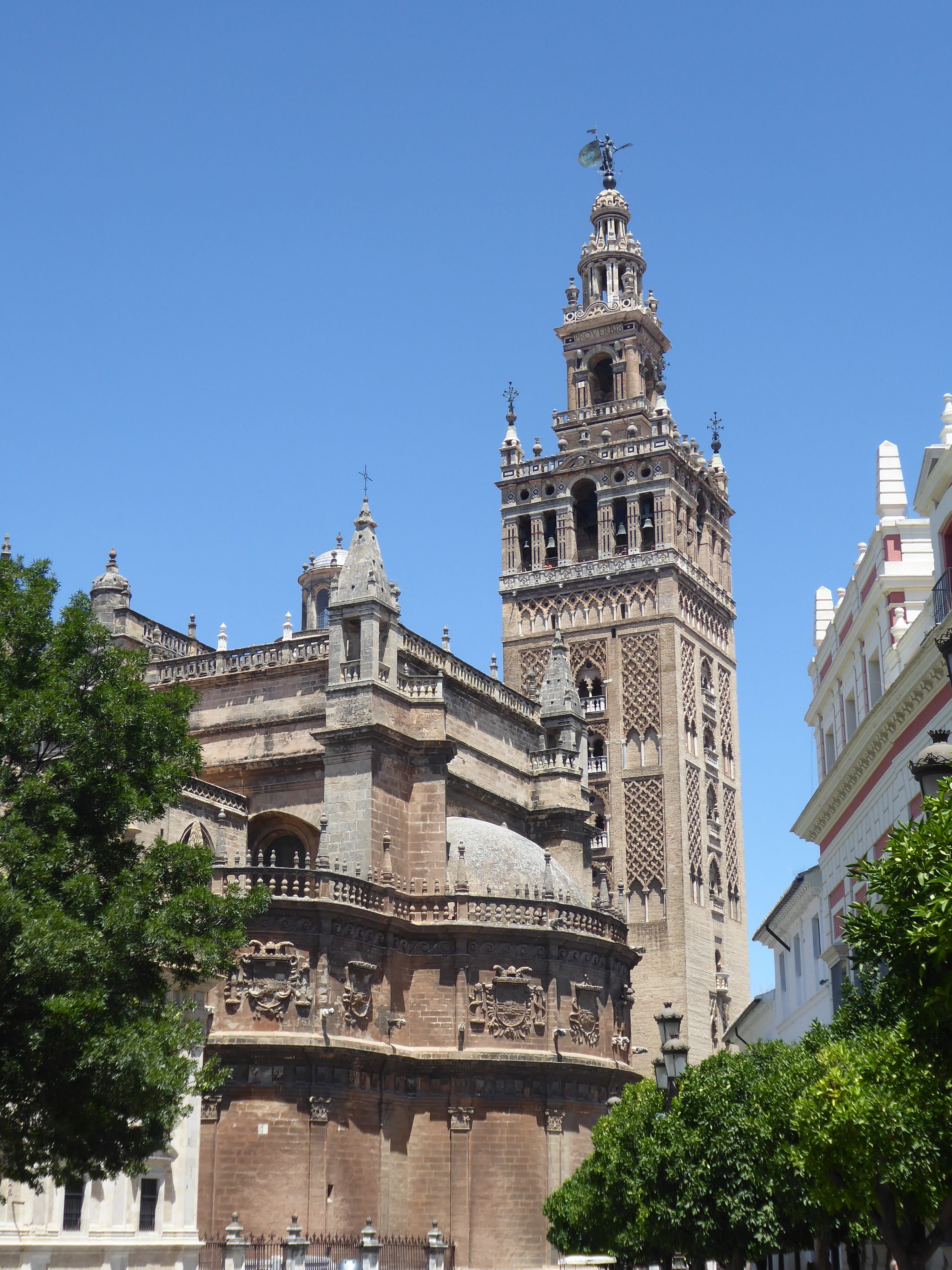
The Giralda was actually built by the Moors and the cathedral was added to it to make it look part of the same building including changing the top to a Renaissance style. Pleasantly the walk up the tower isn’t stairs, just an angled walk way and as it’s so wide the angle is low so worth trekking up to see the views, personally I thought the best view was that of the Maestranza (bullring).
Alcazar / Royal Alcazar of Seville
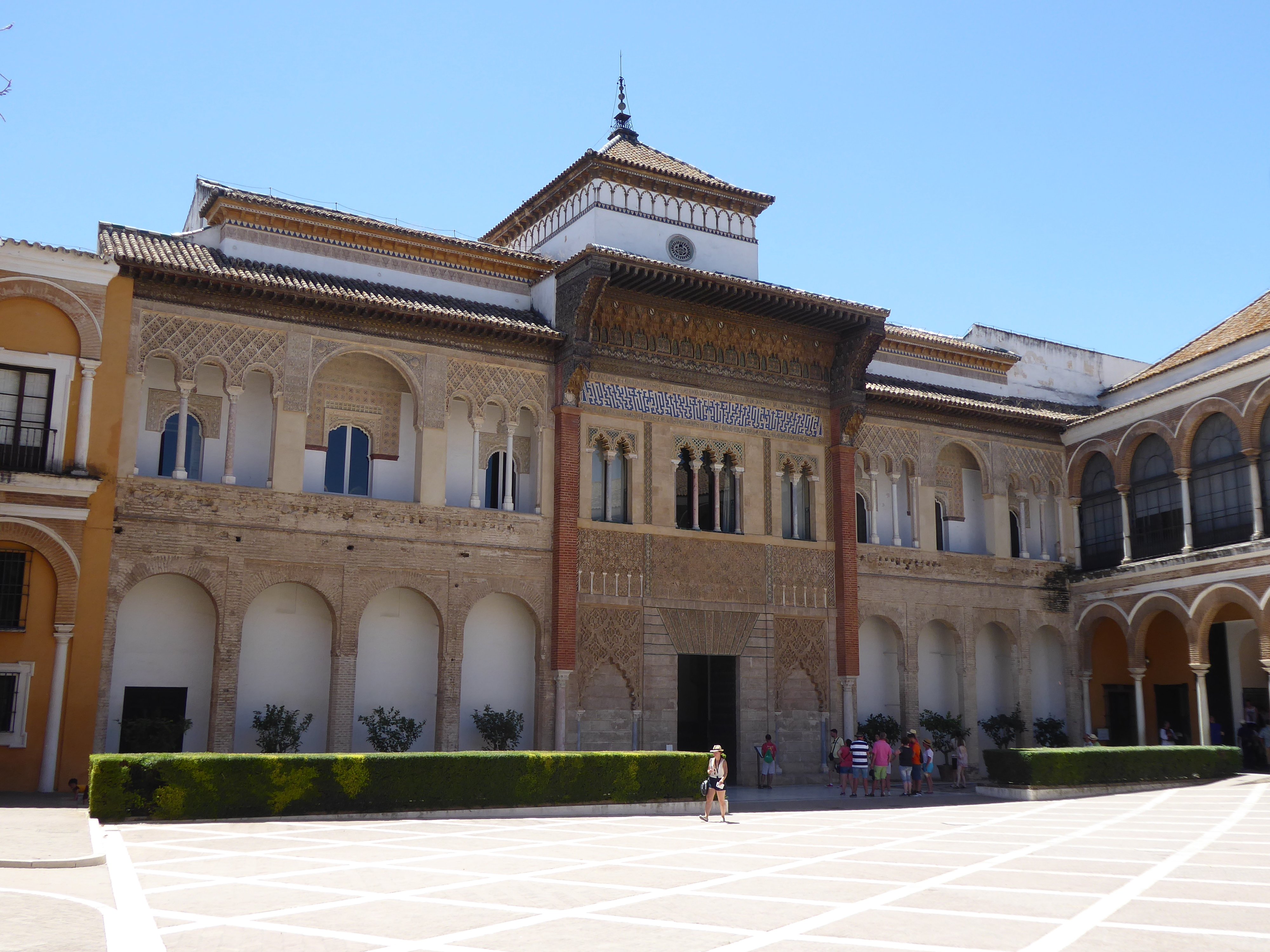
Right next door the cathedral is the Alcazar (Royal Alcazar of Seville), from the outside may not look like much but in inside and gardens are an oasis in the city. The palace is the home to the Spanish Royal family when they are in Seville; it is big and lavish but still has an understated charm about it. The very first structure on this location was built in the 1st century but not much is known about it however a Moor King started to build there in the 900s which was added to in the 11th century and a big rebuild, add-on and large construction were done in the 12th Century to transform the structure into a palace – pieces were added on till the 16th century. The Moorish style is impregnated into this Palace’s DNA both intentionally and unintentionally, subsequent Monarchs have kept true to its origins which is quite remarkable.
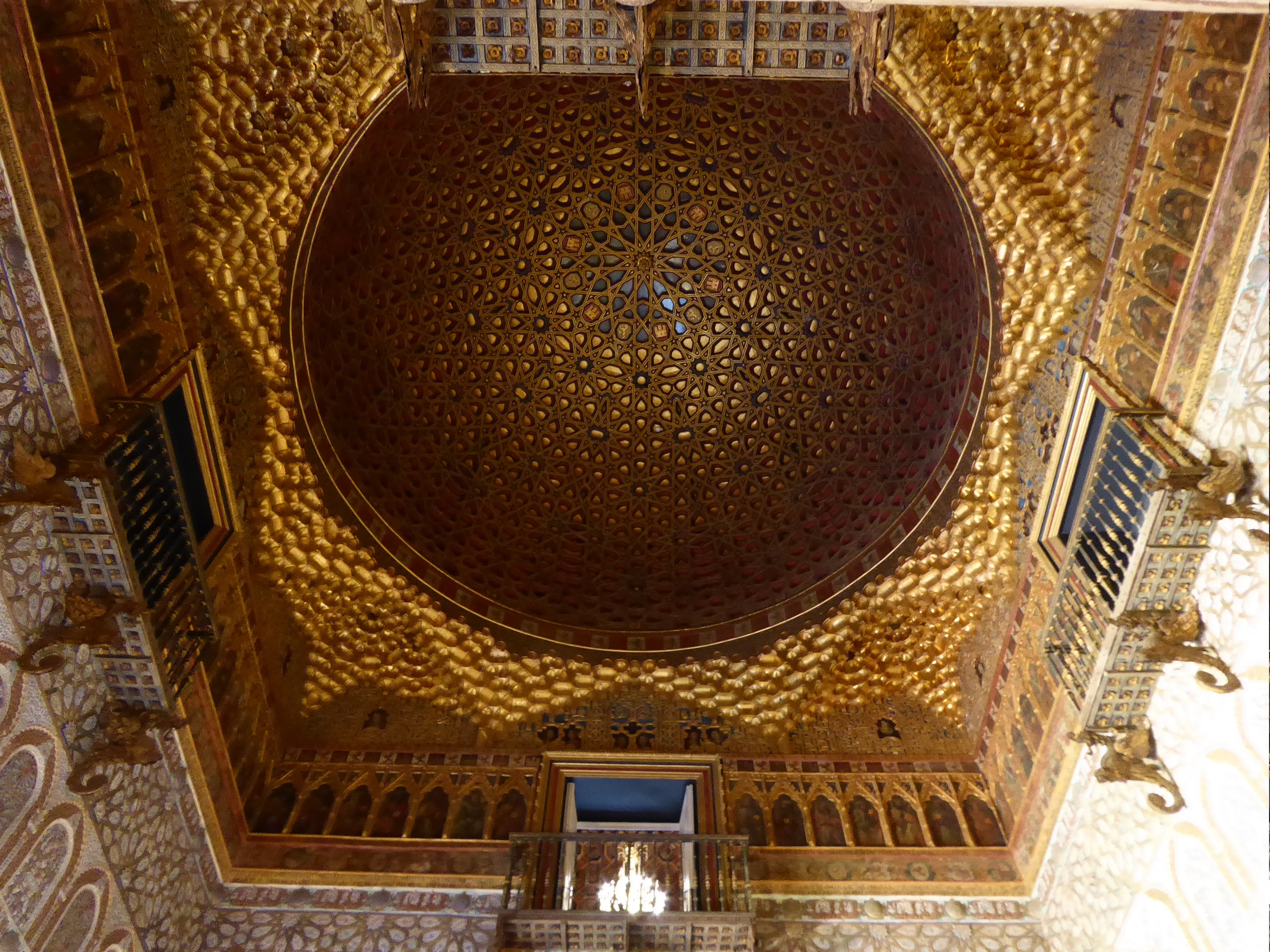
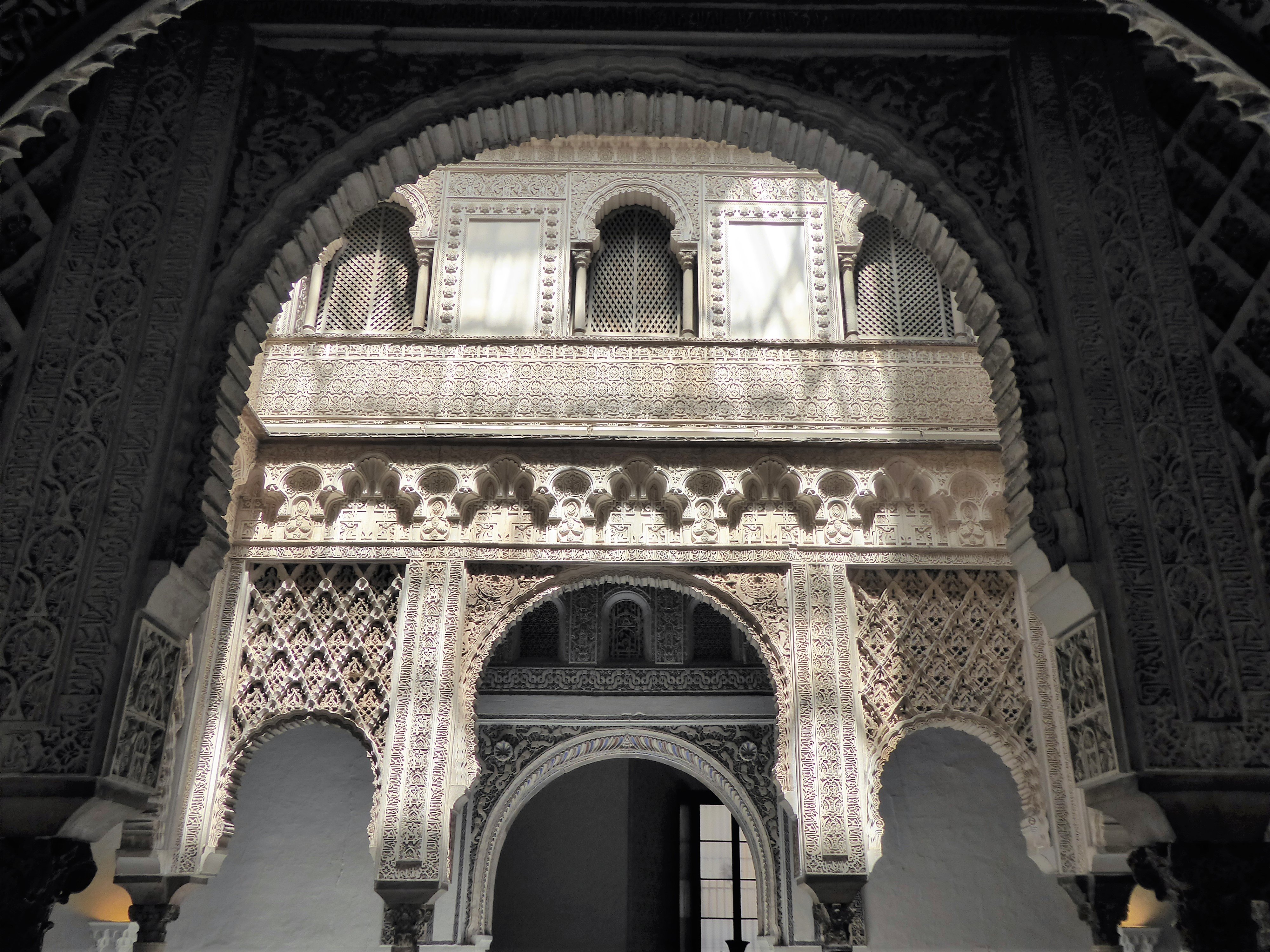
I thought Portugal had lots of tiles, which is does and loads on the exterior of buildings, in Seville the interior of the historical buildings have a medley of coloured tiles faded with time I can only imagine how vibrant these colours must have been hundreds of years ago. Primary colours with a generous addition of orange and green must have struct the pupils in blinding fashion when they were new and also adding light in otherwise dark houses almost secular; because of the blistering sun houses were kept cool like an escape to privacy and relaxation – common for large houses/palaces was to live downstairs in the summer and upstairs in the winter.
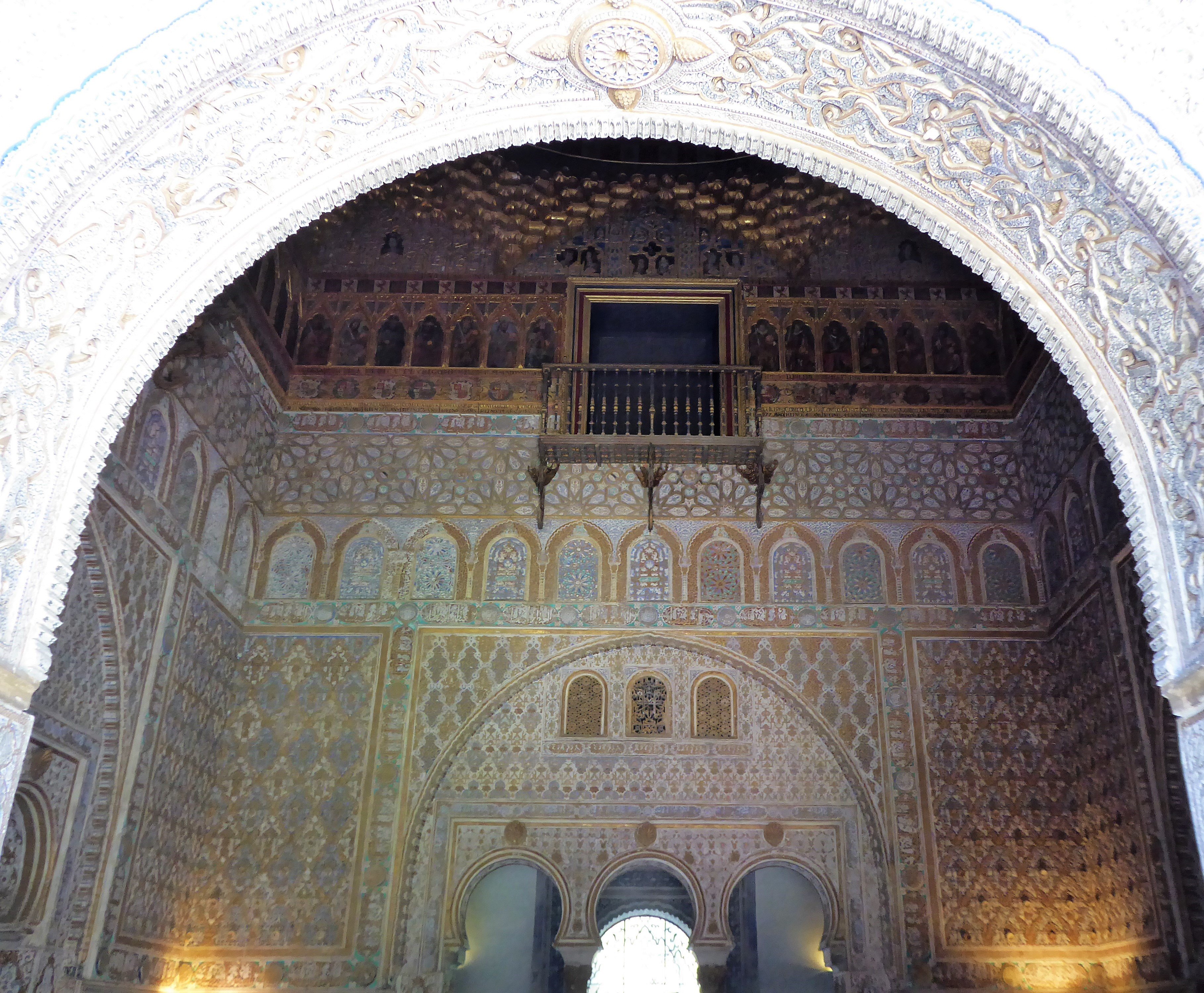
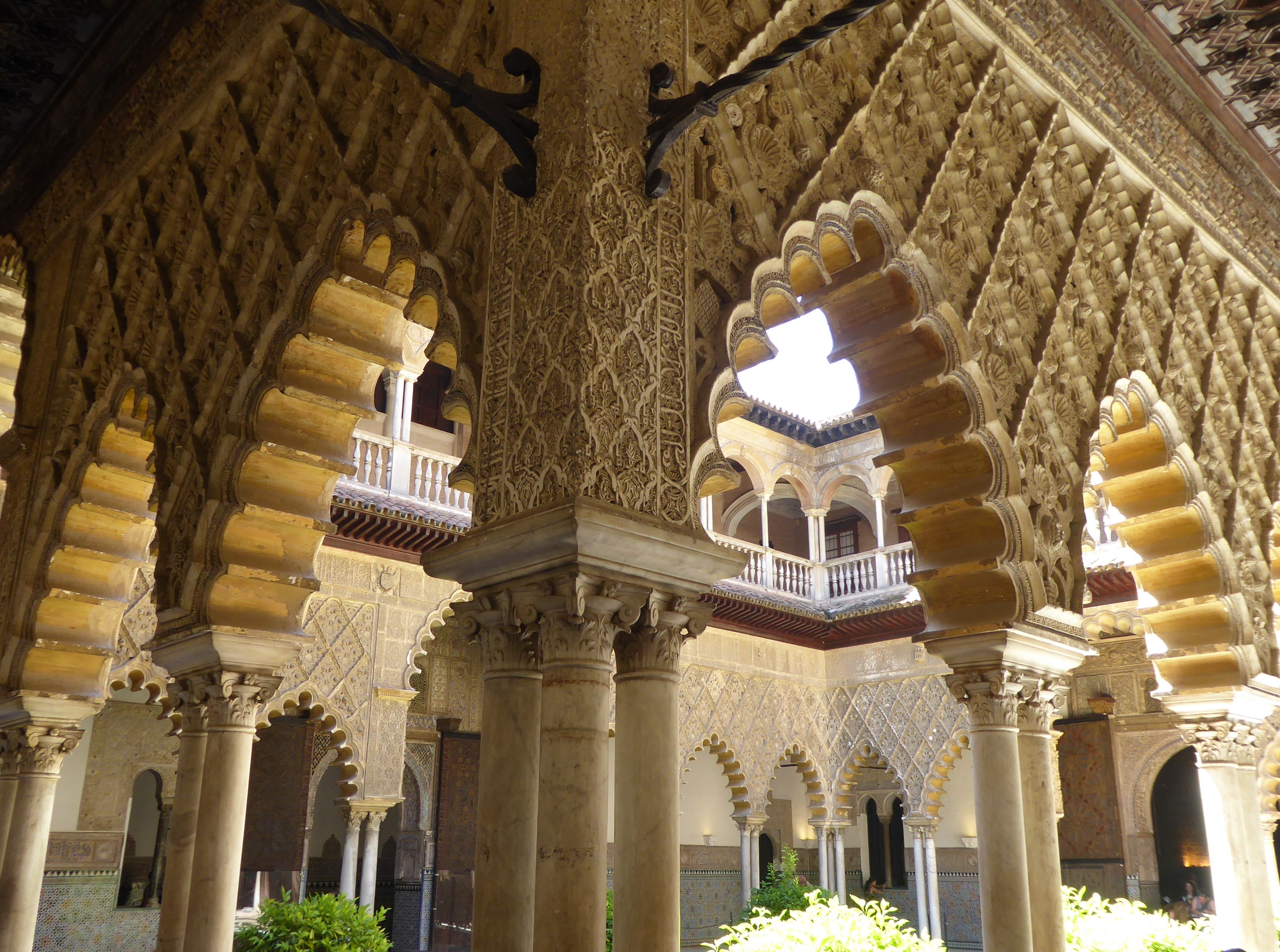
The gardens of the palace are split into courtyards and then larger gardens on the outside of the main palace structure. Seville has many public parks and gardens, well maintained and safe to wonder around – they are well manicured but not overdone to the extent of being pretentious, they are inviting places to visit and sit on a bench and watch people as they pass you by. As with the public spaces in Seville the Alcazar’s gardens are just as inviting and with so many nooks and crannies large and small you can find seclusion and stillness under the shade of trees even in this one of the busiest and most visited sites in Saville.
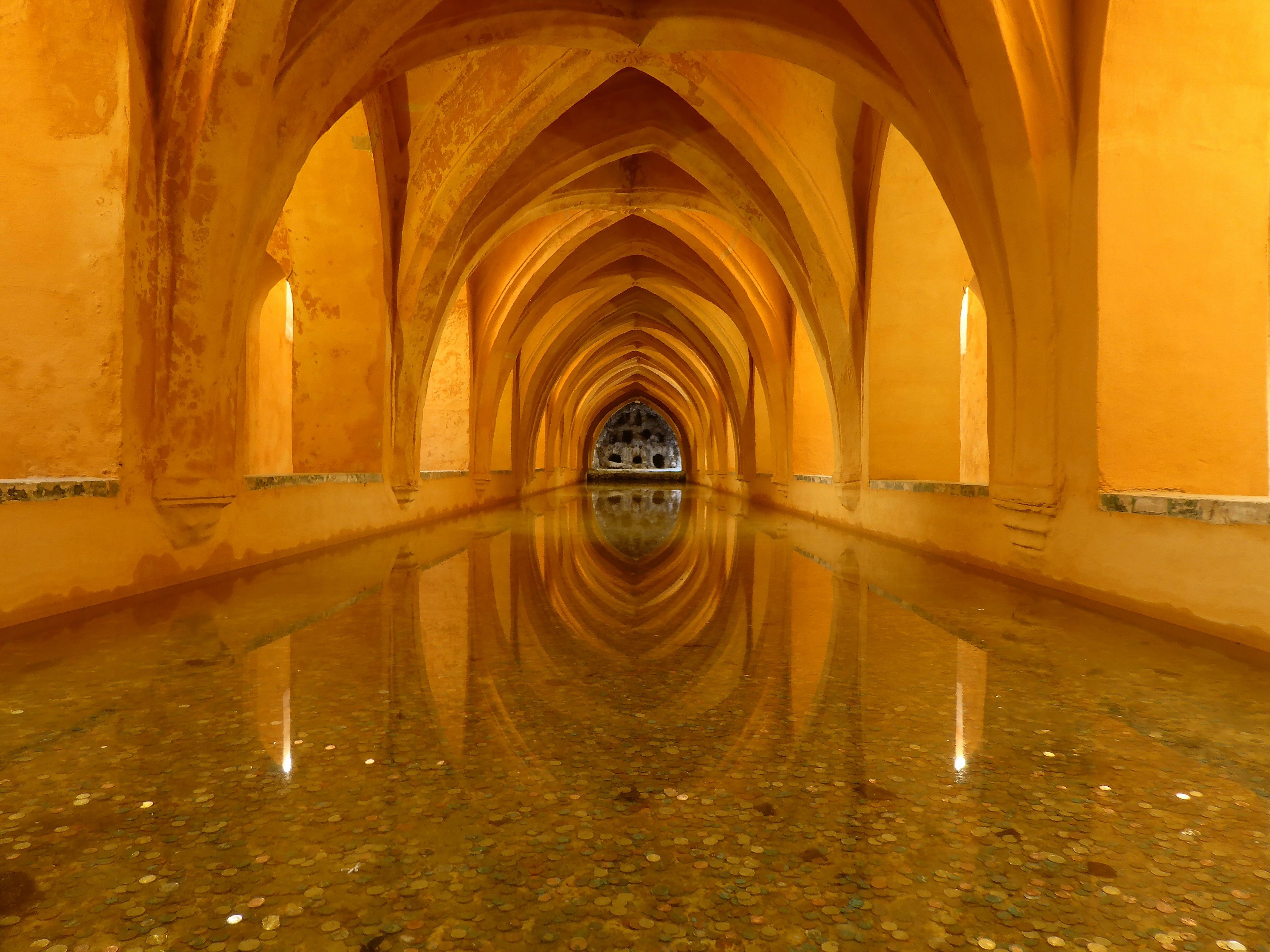

Plaza de Espana
Is virtually an infant in age for Seville being constructed in 1920 still that didn’t stop them making an impressive building in size and detail with a mix of the Renaissance Revival and Moorish Revival (Neo-Mudéjar) styles of Spanish architecture. The picture is a bit distorted as I wanted to get the vastness of it (semi-circular) but remaining inviting and the closer you get the more detail you see just like the historical buildings i.e. where they took the time and effort to make buildings decorative just for the sake of beauty (and to show their wealth), where they achieved “more” without making it “kitsch” with price never a hindrance to the final product. Plaza de Espana is set within a park, Maria Luisa Park (Parque de María Luisa) which is huge, you could just about spend a who day exploring the park and everything within it like the Museum of Arts and Traditions, Archeological Museum and the adjacent parks!

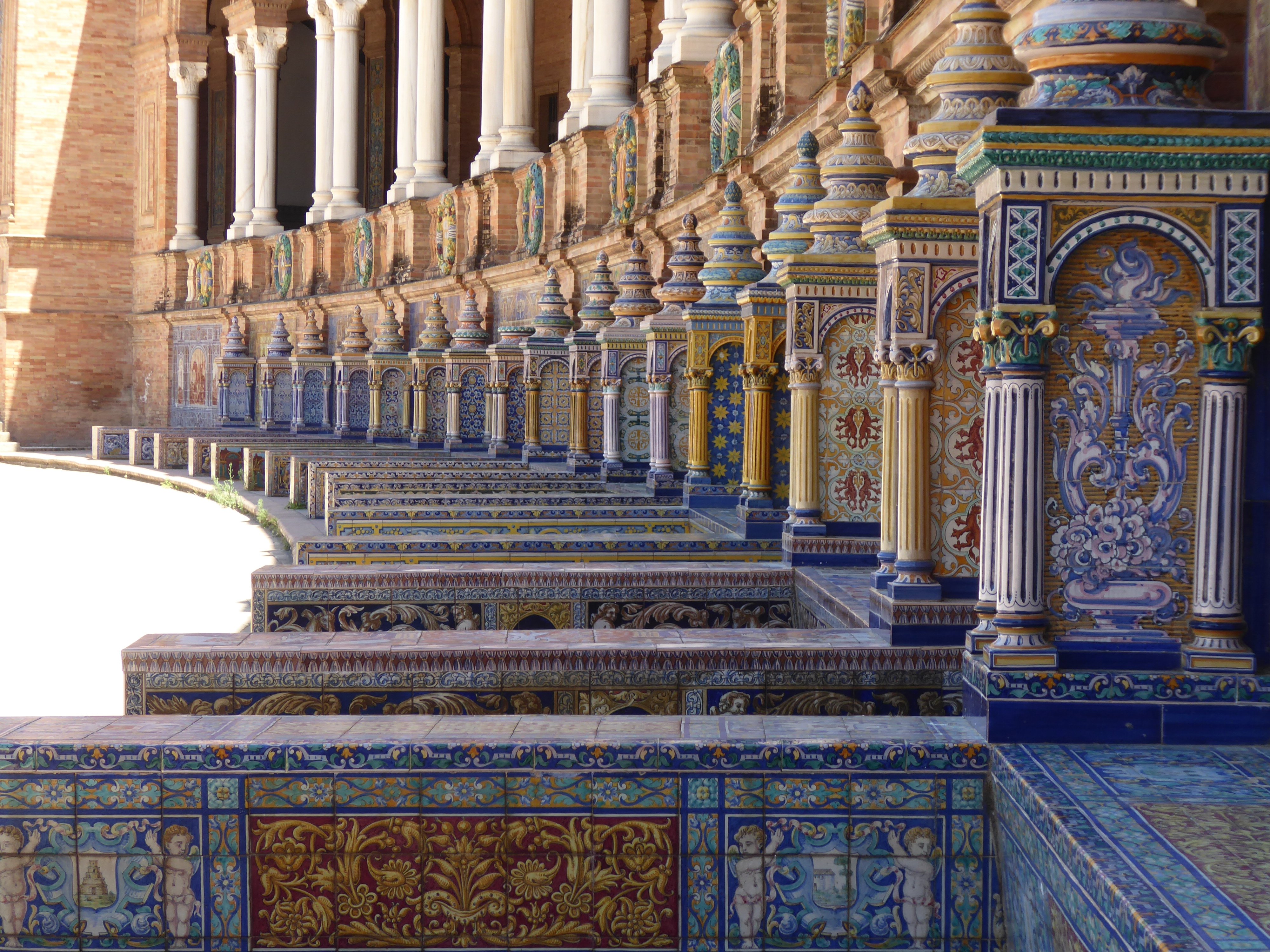

Although Saville (historical part) is not very big and filled with history and interesting stories wherever the eye turns it isn’t overbearing and you can just as easily spend days just visiting all the churches, monasteries and monuments or simply amble around the street and abundant little alleyways taking in the sun and atmosphere and that is exactly what I did for the rest of the day!

Follow on if you like to part 2 and 3:
Seville, great place but time to leave, muchas gracias! – Part 3

The architecture is unbelievable.